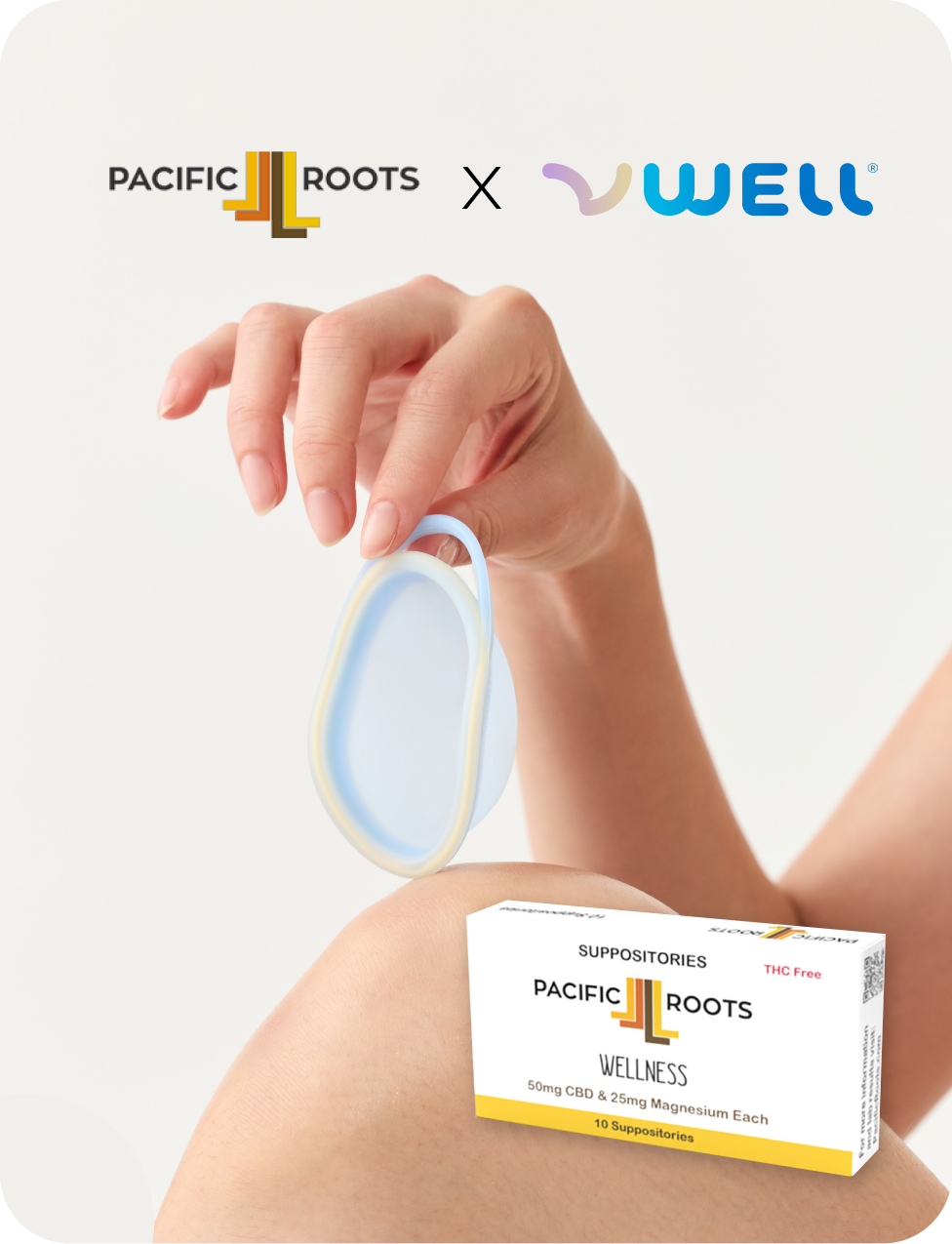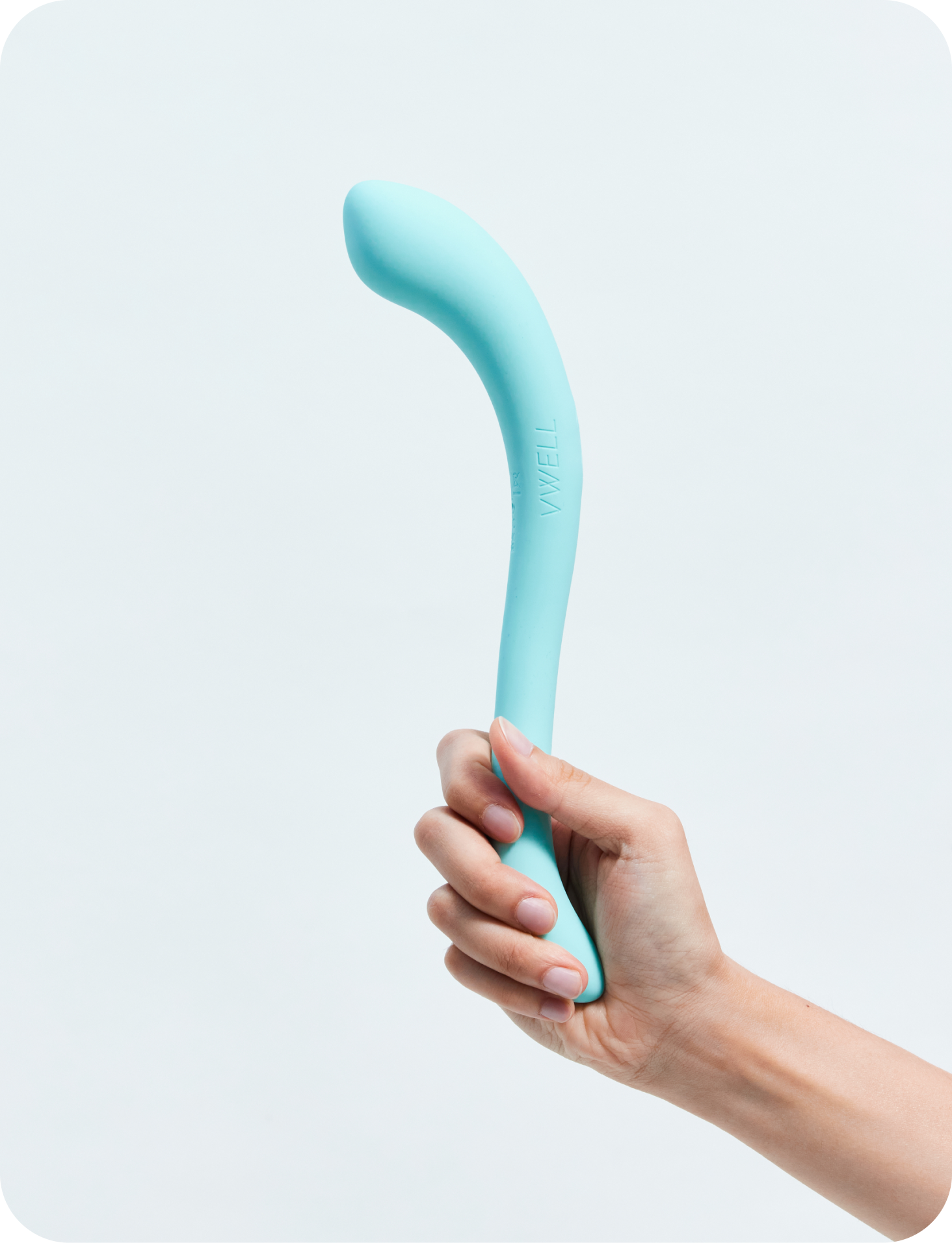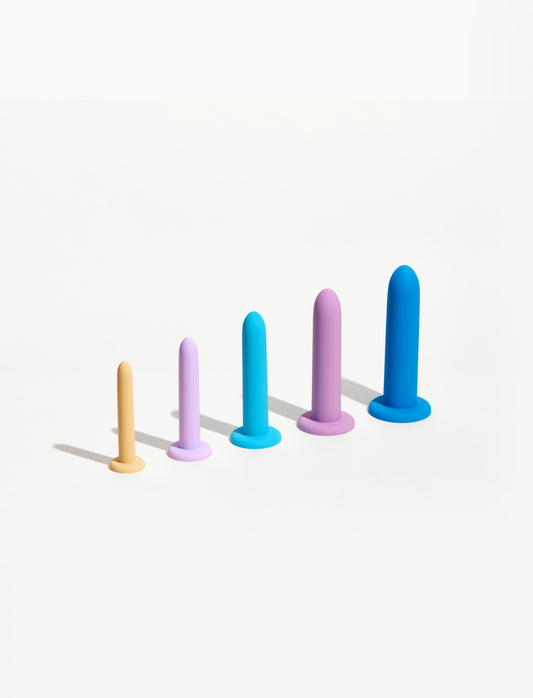Pregnancy and childbirth are profound moments in a woman's life, leaving indelible marks on her memories and body. One of the areas most affected is the pelvic floor, a complex network of muscles, ligaments, and connective tissues that provide essential support to the bladder, bowel, and reproductive organs. A weakened pelvic floor can result in various health issues, primarily affecting urinary, bowel, and sexual function.
We're here to guide you through understanding and addressing these postpartum challenges using powerful tools for recovery: pelvic wands and dilators (trainers).
Table of Contents
- What Is Postpartum Recovery?
- How Dilators (Trainers) and Pelvic Wands Help With Postpartum Recovery
- How to Use a Pelvic Wand or Dilator (Trainer) for Postpartum Recovery
- Conclusion
What Is Postpartum Recovery and Why Is It Important
During pregnancy, the pelvic floor undergoes significant changes to support the extra weight of the growing baby, resulting in tension and fatigue due to increased downward pressure. Weakened pelvic floor muscles can lead to issues such as urinary incontinence, pelvic organ prolapse, and decreased sexual satisfaction.
Additionally, both vaginal delivery and cesarean section can result in tears, episiotomies, and the formation of scar tissue. If not properly addressed, scar tissue can cause discomfort, restrict mobility, and even contribute to ongoing pelvic floor dysfunction.
It is essential to prioritize postpartum recovery and take steps to address these concerns for both short-term and long-term health and well-being.
The postpartum period begins immediately after childbirth and typically lasts for six weeks to several months, depending on various factors such as your overall health, the type of delivery (vaginal or cesarean), and any complications that may have arisen. Postpartum recovery involves the gradual healing of the reproductive organs, including the uterus, cervix, and vagina, as well as the recovery of abdominal muscles and pelvic floor tissues, along with the adjustment of hormone levels back to their pre-pregnancy state.
How Dilators (Trainers) and Pelvic Wands Help With Postpartum Recovery
Both pelvic wands and dilators (trainers) are invaluable tools in recovering damaged pelvic floor muscles and tissues:
Stretching the Pelvic Floor
After childbirth, the pelvic floor muscles may become tight and weak, leading to incontinence and pelvic pain. Stretching exercises using pelvic wands or dilators can restore flexibility and elasticity to the vaginal tissue and also help strengthen pelvic floor muscles.
Addressing Scar Tissue
Both pelvic wands and dilators can be beneficial in breaking down scar tissue, including tears and episiotomies formed during delivery. You can reduce scar tissue formation and sensitivity by gently massaging it with a pelvic wand or using graduated dilators.
Promoting Blood Flow and Circulation
Both pelvic wands and dilators (trainers) can stimulate blood flow and circulation to the pelvic area, delivering essential nutrients and oxygen to the muscles and tissues. Enhanced blood flow and improved circulation accelerate recovery and help reduce inflammation and swelling.
How to Use a Pelvic Wand or Dilator (Trainer) for Postpartum Recovery
Using a pelvic wand or dilator (trainer) for postpartum recovery involves several steps:
- Prepare: Wash your hands and the pelvic wand or dilator (trainer) thoroughly with soap and water, and ensure the device is dry before using. Apply a water-based lubricant to the device to ease insertion.
- Find a Comfortable Position: Sit, lie down, bend your knees, or keep your feet flat on the floor. You may need pillows for easy access to the pelvic area.
- Relaxation Techniques: Take a deep breath through your nose, draw air into your abdomen and pelvis, and feel your belly rise.
- Insertion: Gently insert the wand or dilator (trainer) into the vaginal opening, moving slowly and allowing your muscles to adjust to the sensation. If you experience any resistance or discomfort, pause and take slow, deep breaths until you feel comfortable to proceed.
- Massage or Stretch: If you’re using a wand, gently massage the pelvic floor muscles and apply pressure to specific trigger points or tight spots. Move the wand in circular motions or back and forth to promote relaxation and improve circulation. If you’re using a dilator (trainer) set, start with the smallest size and gradually insert the device deeper into the vagina as your comfort level increases. Hold the dilator (trainer) in place for a few moments to allow the muscles to relax and stretch. You can increase the dilator (trainer) size as you feel more comfortable.
- Duration and Frequency: Start with short sessions of 5-10 minutes and gradually increase the duration as tolerated. Aim for regular sessions several times a week to achieve the best results in your postpartum recovery.
- Listen to Your Body: Pay attention to how your body responds during and after using the wand or dilator (trainer). If you experience any discomfort or pain, stop immediately and consult with your healthcare provider.
- Clean and Store: After each use, clean the wand or dilator (trainer) according to the manufacturer's instructions and store it in a clean, dry place.
- Follow Up: Monitor your progress over time and adjust your routine as needed. Consider consulting with a pelvic floor physical therapist for personalized guidance and support in your postpartum recovery journey.
- Partner Support: Involve your partner in your postpartum recovery journey as they can provide emotional support and assistance at every step of the process.
Conclusion
Navigating the postpartum period can be challenging, but with the right tools and support, it can also be a time of profound healing and renewal. Vaginal dilators and pelvic wand offer a safe, non-invasive way to address postpartum discomfort and promote pelvic health. By incorporating these gentle yet effective tools and techniques into your recovery journey, you can reclaim comfort, confidence, and vitality as you embrace the joys of motherhood.
FAQs
1. What is the difference between pelvic wands and dilators (trainers)?
Dilators (Trainers) usually come in sets of three to five graduated sizes (or more); they are cylindrical and used to stretch vaginal muscles and tissues. Pelvic wands, on the other hand, are curved devices designed to deliver targeted massage and pressure on pelvic floor muscles to alleviate tension and improve function.
2. When to start using pelvic wands and dilators (trainers) after giving birth?
It's recommended to wait at least six weeks after delivery. However, the timeline for starting pelvic wand or dilator (trainer) use varies for each woman and depends on factors such as the type of delivery and any complications experienced during childbirth. It's best to consult your healthcare provider to determine the appropriate timing for incorporating these tools into your postpartum recovery plan.
3. Can pelvic wands and dilators (trainers) help with postpartum sexual discomfort?
Yes, pelvic wands and dilators (trainers) can aid in addressing postpartum sexual discomfort by promoting vaginal elasticity and reducing tension in the pelvic muscles. However, it's essential to consult with your healthcare provider to ensure these tools are appropriate for your specific situation and to address any underlying issues contributing to the sexual discomfort.




